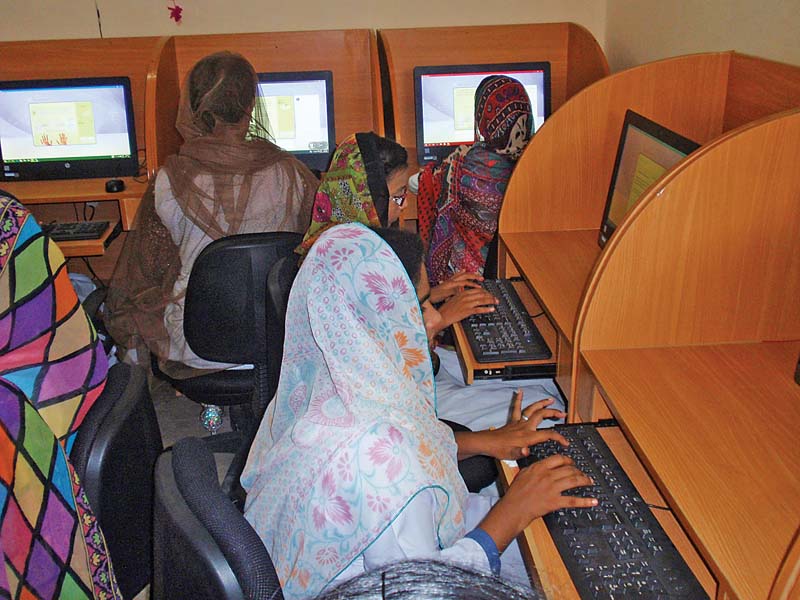
In Pakistan, there are around 37 million internet subscribers according to the Pakistan Telecom Authority (PTA), which makes it the 20th largest nation in terms of internet users in the world. However, the tool is utilized by only 18% of the population - our Internet penetration rate is amongst the worst in the world, akin to Sub-Saharan African nations.
Pakistan’s 3G, 4G user base rises to 32 million
It should come as no surprise then that Pakistan was ranked 110th out of 139 countries in the Global Information Technology Report (GITR) 2016, published by the World Economic Forum, which assesses a country’s ability to leverage Information Communication Technology (ICT) for increased competitiveness and well-being of the population by measuring its digital environment.
Pakistan has been stagnant in terms of ICT growth; our GITR ranks over the last 3 years prior to this one were 112th, 111th and 105th respectively. This year, Pakistan scored 3.4 out of 7, well below the median of 4.83.
Clearly then, our nation is not well positioned to take advantage of the digital revolution in spite of having one of the largest user bases in the world. So what barriers does Pakistan face that prevents it from tapping into the full potential of the vibrant internet ecosystem?
To start with, Pakistan lags behind severely in terms of infrastructure development for the internet. According to Akamai’s State of Internet report, the average speed in Pakistan is 2.5 Mbps which is almost half of the world’s average speed of 6.1 Mbps. While our average speed limits have undoubtedly gone up, the pace of this growth needs to be accelerated dramatically.
Also, only 4.8% of Pakistani users - in comparison to 78% of global users - have access to speeds of up to 4 Mbps. The concept of high speed fixed broadband, such as fibre optic to the home, is still novel and is limited to our largest cities. Furthermore, 3G coverage is largely concentrated around urban centres and is largely absent in our rural areas; 4G coverage is even more selective. A report by McKinsey in 2014 estimated that 68% of Pakistan’s offline population lived in rural areas.
However, why should one expect the telecom companies or internet service providers to develop infrastructure in rural areas when there is a dearth of digital literacy? The responsibility of developing ICT skills of a population lies with the education system of the country which is severely under-resourced in Pakistan. Moreover, literacy rates in urban centres is 74%, whereas its 47% in rural areas.
This issue is also exacerbated by the lack of conversion from the older feature phones to newer smart phones in the vast majority of the population. Unfortunately, there are no precise figures on the penetration of smart phones and estimates range between 10% and 20%. Even though imports of smart phones are growing, the demand is largely created by the urban centres which can be attributed to the significant difference in the income levels.
Japan focuses on Pakistan for technology transfer
The combination of all these barriers creates a lack of need or incentive for people to use the internet. It is potentially worrying as the European Commission estimates 90% of current jobs require basic level of digital skills. Initiatives are underway to resolve this problem, such as the projects by Punjab IT Board, but the approach needs to trickle down to the most destitute citizens as well.
There are a few silver linings in our quest to becoming a knowledge economy. Firstly, a whopping 92% of our internet user base utilizes the mobile broadband technology. This offers a unique opportunity to take advantage of the already very high cellular mobile tele-density which reaches remote pockets of Pakistan, granted infrastructure is simultaneously developed.
Mobile broadband should be inspired by the resounding success of branchless banking which allowed the telecommunication operators to leverage their networks into providing inclusive financial services to a large segment of untapped market. According to a Gallup survey, 67% of Pakistanis consider making payments (especially for bills) with mobile money agents as a “useful innovation”. Perhaps similar initiatives could be launched for agricultural services, education or health that employ the mobile internet network for a more inclusive and interactive experience.
Secondly, and perhaps most crucially, Pakistan does not face the biggest obstacle of them all: affordability. Our nation offers mobile data at some of the cheapest rates in the entire world. Even GITR’16 recognizes this as it ranked Pakistan 1st in its affordability column. The low price of mobile data could potentially be the trump card that gets people more involved in using this technology, assuming work on the other barriers is also concurrently done.
This is encouraging news for upcoming start-ups, especially those that rely on e-commerce - a sector expected to grow from $100 million to $1 billion by 2020. E-commerce websites like Daraz.pk, Olx.pk, and Ali Baba already rank in the top 30 most visited websites in Pakistan according to Alexa.com; even Amazon.com makes the list despite not having any operations in the country. The success of this industry is directly proportional to boosting the adoption of internet in the country, especially for smaller, local ventures.
It is high time that we recognize the transformational impact of bringing more of our population online. Our government needs to move vigorously on several fronts by setting ambitious, but pragmatic, goals to increase internet coverage and adoption. This will require collaboration from all the stakeholders in the technology industry ranging from policy makers, telecom operators to device manufacturers. Only then can we begin our journey to becoming a true knowledge economy.



1732105641-0/BeFunky-collage-(78)1732105641-0-165x106.webp)


1726722687-0/Express-Tribune-Web-(9)1726722687-0-270x192.webp)


1732096230-0/BeFunk_§_]__-(12)1732096230-0.jpg)







COMMENTS (2)
Comments are moderated and generally will be posted if they are on-topic and not abusive.
For more information, please see our Comments FAQ